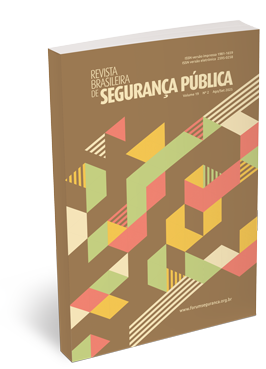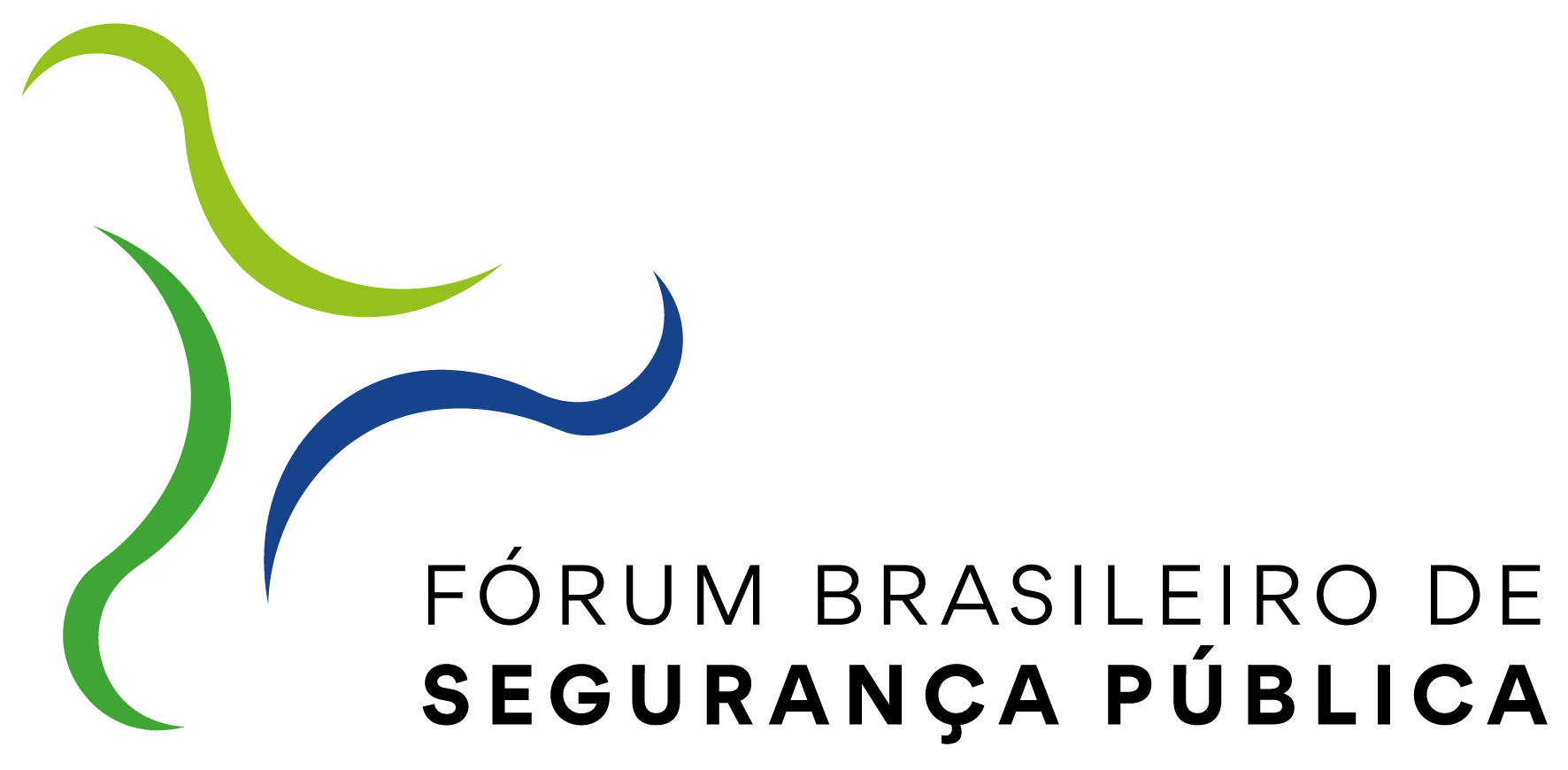BODY CAMS AND LEGAL PROFESSIONALS
REQUESTS FOR FOOTAGE OF POLICE ACTIONS IN THE SÃO PAULO JUSTICE SYSTEM
DOI:
https://doi.org/10.31060/rbsp.2025.v19.n2.2025Keywords:
Body cams, Judicial Power, Military Police, Criminal processAbstract
Based on a review of research on body-worn cameras used by police officers, we identified that few studies address how legal practitioners are dealing with this project; specifically, to what extent they have activated (or not) this technology to assess potential reports of police violence, torture, and fabricated arrests. Most studies focus on evaluating the impact of cameras on policing, especially regarding violence. Therefore, this research seeks to explore how legal practitioners have activated and/or requested police body-camera footage, in which types of cases, and which actors request such evidence, using a database of cases from 2022 concentrated in the city of São Paulo. The findings indicate that judges and public defenders are the primary requesters of footage, especially in cases involving drug trafficking and robbery, with significant variations in the flow of access and responses from the Military Police. In some instances, the footage contributed to defendants’ acquittals or challenged police narratives, while in others, judicial authorities disregarded the recordings. The study concludes that although body-worn cameras can serve as evidence and generate disputes within legal proceedings, their impact is still limited by the centrality of police narratives and the lack of standardized procedures for requesting and using footage.
Downloads
References
ANDRADE, Wendel Lima da Silva. As condições de emergência e funcionamento do sistema COP da polícia militar do Estado de São Paulo. Programa Cepid. Relatório de Iniciação Científica. São Paulo: Núcleo de Estudos da Violência, Universidade de São Paulo (NEV/USP), 2021. Disponível em: https://nev.prp.usp.br/wp-content/uploads/2021/12/Relatorio_NEV_2020-2021-Wendell_BodyCams-IniciacaoCientifica.pdf. Acesso em: 15 jul. 2025.
BARBOSA, Daniel; FETZER, Thiemo; SOTO, Caterina; SOUZA, Pedro. De-escalation technology: the impact of body-worn câmeras on citizen-police interactions. Universidade de Warwick: Londres, 2021.
BONATO JUNIOR, João Carlos. Uso de bodycam pela polícia militar do paraná: uma análise incipiente do tema. Recima21 – Revista Científica Multidisciplinar, Jundiaí, v.3, n.1, 2022. DOI: https://doi.org/10.47820/recima21.v3i1.1009
BRAGA, Anthony; SOUSA, William; COLDREN, James; RODRIGUEZ, Denise. The effects of body-worn cameras on police activity and police-citizen encounters: a randomized controlled trial. The Journal of Criminal Law and Criminology, v. 108, n. 3, p. 511-538, 2018.
BRASIL. Conselho Nacional de Justiça (CNJ). Resolução Nº 65 de 16/12/2008. Dispõe sobre a uniformização do número dos processos nos órgãos do Poder Judiciário e dá outras providências. Disponível em: https://atos.cnj.jus.br/atos/detalhar/119. Acesso em: 22 jul. 2025
DA SILVA, Jardel; CAMPOS, Joamir Rogério. Monitoramento das ações policiais por meio do uso de câmeras de porte individual: uma análise de sua utilização nas atividades operacionais. Revista Ordem Pública e Defesa Social, Santa Catarina, v. 8, n. 2, p. 233-253, jul./dez. 2015.
DUARTE, Daniel Edler. Câmeras corporais e ação policial: as condições de emergência e os impactos dos dispositivos de controle em São Paulo. NEV – Núcleo de Estudos da Violência, Notícias, Segurança Pública, Violência Urbana, 8 dez. 2021. Disponível em: https://nev.prp.usp.br/noticias/cameras-corporais-e-acao-policial-as-condicoes-de-emergencia-e-os-impactos-dos-dispositivos-de-controle-em-sao-paulo/. Acesso em: 14 fev. 2023.
FABER, Marcelo Gerhardt. Uma imagem vale mais que mil palavras? Os usos das imagens das câmeras individuais da polícia militar de Santa Catarina nos processos judiciais. 2022. 114 f. Dissertação (Mestrado em Ciências Sociais) – Escola de Humanidades, Pontifícia Universidade Católica do Rio Grande do Sul, Porto Alegre, 2022.
LIMA, Renato Sérgio de; BUENO, Samira; SOBRAL, Isabela; PACHECO, Denis. Câmeras na farda reduzem a letalidade policial?. GV-Executivo, São Paulo, v. 21, n. 2, p. 13-21, 2022. DOI: https://doi.org/10.12660/gvexec.v21n2.2022.85750. DOI: https://doi.org/10.12660/gvexec.v21n2.2022.85750
FBSP – Fórum Brasileiro de Segurança Pública. As câmeras corporais na Polícia Militar do Estado de São Paulo: processo de implementação e impacto nas mortes de adolescentes. São Paulo: FBSP, 2023, 36 p.
FERREIRA, Carolina Cutrupi; TOLEDO, Fabio Lopes (no prelo). Câmera, gravando: implementação e aspectos legais no uso de câmeras em agentes policiais.
GOODALL, Martin. Guidance for the Police Use of Body-Worn Video Devices. London: Home Office, 2007. Disponível em: https://www.edpb.europa.eu/system/files/2023-06/ARC%20GUIDANCE%20Guidance%20on%20Body%20Worn%20Cameras.pdf.
JESUS, Maria Gorete Marques de. A verdade jurídica nos processos de tráfico de drogas. Belo Horizonte: D' Plácido, 2018.
JESUS FILHO, José de; TRECENTI, Julio. Coleta e organização de dados do Tribunal de Justiça de São Paulo. [s.l.], 2020. Disponível em: https://tjsp.consudata.com.br/
LUM, Cynthia; KOPER, Christopher; MEROLA, Linda; SCHERER, Amber; REIOUX, Amanda. Existing and ongoing body worn camera research: knowledge gaps and opportunities. Report for the Laura and John Arnold Foundation. Fairfax, VA: Center for Evidence-Based Crime Policy, George Mason University, 2015.
MCCLUSKEY, John; SMITH, Shakierah; ROBERTSON, Oral; UCHIDA, Craig; MOSLEY, Damon. The evidentiary value of body-worn camera footage: a survey of prosecutors and public defenders. CNA, 2019.
MEROLA, Linda; LUM, Cynthia; KOPER, Christopher; SCHERER, Amber. Body worn cameras and the courts: a national survey of state prosecutors. Report for the Laura and John Arnold Foundation. Fairfax, VA: Center for Evidence-Based Crime Policy, George Mason University, 2016.
MORROW, Weston; KATZ, Charles; CHOATE, David. Assessing the impact of police body-worn cameras on arresting, prosecuting, and convicting suspects of intimate partner violence. Police Quarterly, v. 19, n. 3, p. 303-325, 2016. DOI: https://doi.org/10.1177/1098611116652850
OLIVEIRA, Paulo Francisco de; FÁVERO Wiliam Celestino. A utilização de câmeras no fardamento policial e seus efeitos práticos. Brazilian Journal of Development, v. 8, n. 10, p. 67673-67692, 2022. DOI: https://doi.org/10.34117/bjdv8n10-185. DOI: https://doi.org/10.34117/bjdv8n10-185
PETERSEN, Kevin; MOURO, Alejandro; PAPY, Donald; CASTILLO, Noel; ARIEL, Barak. Seeing is believing: the impact of body-worn cameras on court outcomes, a cluster-randomized controlled trial in Miami Beach. Journal of Experimental Criminology, v. 19, p. 191-211, 2021. DOI: https://doi.org/10.1007/s11292-021-09479-6
PETERSEN, Kevin; PAPY, Donald; MOURO, Alejandro; ARIEL, Barak.The usage and utility of body-worn camera footage in courts: a survey analysis of state prosecutors. Journal of Empirical Legal Studies, v. 20, p. 534-569, 2023. DOI: https://doi.org/10.1111/jels.12358
SOMMERS, Roseanna. Will putting cameras on police reduce polarization?. The Yale Law Journal, v. 125, n. 5, p. 1304-1362, 2016.
INSTITUTO SOU DA PAZ. Mecanismos de controle do uso da força e da letalidade implementados pela polícia militar do Estado de São Paulo. São Paulo: Instituto Sou da Paz, 2022.
WHITE, Michael. Police officer body-worn cameras: assessing the evidence. Washington, DC: Office of Community Oriented Policing Services, 2014.
WHITE, Michael; TODAK, Natallie; GAUB, Janne. Examining body-worn camera integration and acceptance among police officers, citizens, and external stakeholders. Criminology and Public Policy, v. 17, n. 3, p. 649–678, 2018. DOI: https://doi.org/10.1111/1745-9133.12376
Downloads
Published
How to Cite
Issue
Section
License
Copyright (c) 2025 Revista Brasileira de Segurança Pública

This work is licensed under a Creative Commons Attribution 4.0 International License.
Licensing
The Brazilian Journal of Public Security uses the Creative Commons License as a form of licensing for its published works. The license used follows the CC BY 4.0 - Attribution 4.0 International model.
To see the permitted rights please go to the full licence or to our Copyright and Licensing page.



